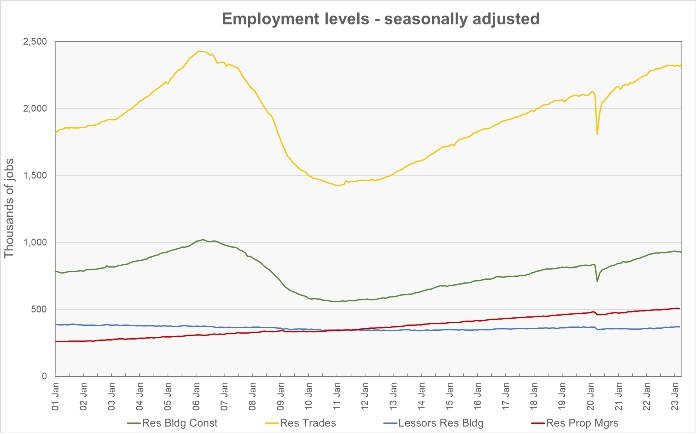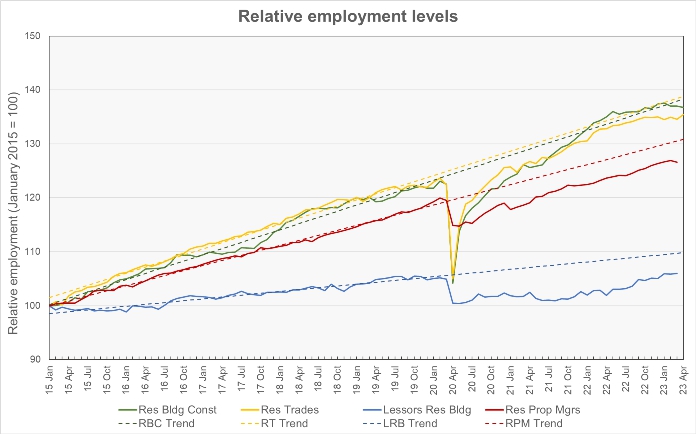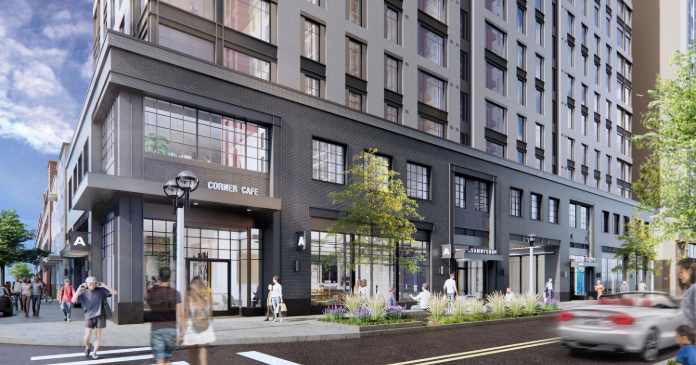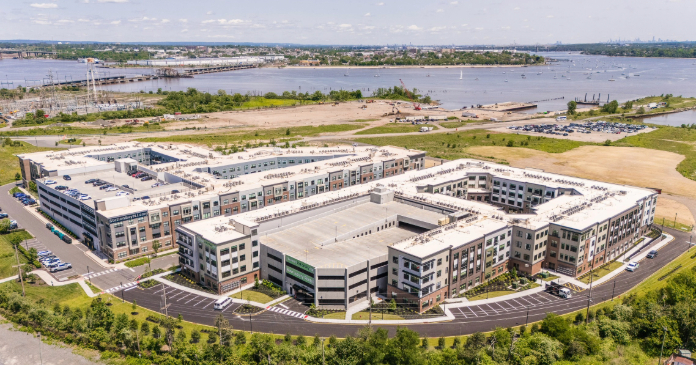The Employment Situation Report from the Bureau of Labor Statistics stated that apartment operations employment fell slightly while residential construction employment rose overall in the latest month.
Total employment continues to grow
The Bureau of Labor Statistics (BLS) reported that total non-farm employment increased by 253,000 jobs in April, based on their survey of business establishments. This compares to revised employment gains of 165,000 jobs in March and 248,000 jobs in February.
The BLS household survey reported that the US unemployment rate dropped to 3.4 percent, down from 3.5 percent last month. The household survey found that the number of employed persons rose by 139,000 from that reported last month while the number of unemployed persons fell by 182,000.
The household survey found that the number of people in the civilian labor force fell by 43,000 in April while the adult civilian population rose by 171,000. The labor force participation rate was unchanged at 62.6 percent. It had been at 63.4 percent before the pandemic. Recovering that 0.8 percent decline in the labor force participation rate would bring 2.2 million more people into the workforce.
Tracking multifamily employment
The BLS reported more detailed employment information on four job categories of interest to the multifamily industry. These are employment as residential construction workers, as specialty trades within residential construction, as residential property managers and as lessors of residential buildings. As usual, some of the data is reported with a month delay, so the latest figures for the latter two categories are for the month of March.
The first chart shows the long-term history of the levels of employment in these four jobs categories.

Residential construction employment rises
Employment in residential building construction in April, usually with general contractors, was reported to be down 1,800 jobs. This was on top of a downward revision of the prior month’s employment level by 2,500 jobs. The employment level for February was also revised lower by 1,700 jobs. Employment in this category is now 929,900 jobs, up 1.3 percent year-over-year and 11.1 percent higher than its level in February 2020.
Employment in residential building trades, i.e. plumbers, electricians, etc., in April was reported to be up 16,000 jobs from March on top of an upward revision of 5,000 jobs to March’s employment level. Employment in this category is now 2,332,300 jobs, up 2.0 percent year-over-year and 9.6 percent above its level in February 2020.
Total February employment in these two categories of residential construction jobs combined was up 0.4 percent from the revised level of the month before. Residential construction employment was 10.0 percent above its level in February 2020.
Apartment operations job counts fall
Employment for residential property managers in March was reported to be down by 1,100 jobs (0.2 percent) from its revised (+200) level for January to 507,800 jobs. Employment for residential property managers is up 2.8 percent year-over-year and is up from its February 2020 level by 5.6 percent.
Employment for lessors of residential buildings was reported to rise in March by 300 jobs from February’s revised (+200) level to 370,500 jobs. Employment in this category is up 3.0 percent year-over-year and is now 0.7 percent above its pre-pandemic level.
Total employment in these two categories combined was reported to be down 0.1 percent from the revised level for the prior month. It is now 3.8 percent above its level in February 2020.
Comparing to trend
The final chart, below, presents the employment data in a different format. It normalizes the employment levels in all four jobs categories to a reading of 100 for January 2015. It also provides trend lines for the growth in each of the categories of employment based on the period from January 2015 through February 2020.

The chart shows that employment levels in all four categories that we track are now below the trend lines from the pre-pandemic period. Employment in residential building construction is now 1.1 percent below trend. Residential trades employment is now 2.4 percent below trend, residential property managers employment is 3.0 percent below trend and lessors of residential buildings employment is 3.4 percent below trend.
The numbers given in the Employment Situation report are seasonally adjusted and are subject to revision. It is common for small adjustments to be made in subsequent reports, particularly to the data for the most recent month. The current Employment Situation report can be found here.













